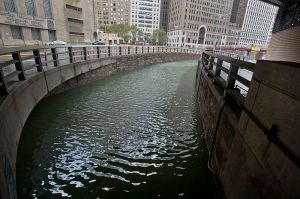The announcement last week that Liberty Mutual had signed a 10-year, 120,000-square-foot lease at 55 Water Street was a rare and welcome piece of good news at a building and corridor of lower Manhattan exceptionally hard-hit by Superstorm Sandy.
The 53-story Financial District skyscraper took on 32 million gallons of water following the October 29 natural disaster. A month later, 30 people were treated for injuries after the basement caught fire during electric repair work. News that Liberty Mutual would be doubling its footprint in the property no doubt came as a relief to the landlord, New Water Street Corp., as it poured $200 million worth of renovations into the ailing tower.
The woes of the building at 55 Water Street are emblematic of those afflicting Manhattan commercial properties affected by Sandy. Accounting firms working on their behalf as they seek damages are all too familiar with the sort of cascading problems wrought by the storm that require a web of insurance plans and clauses spanning wind, flood, blackout and business interruption insurance.
 “The basic challenge with Sandy is that insurance companies are rephrasing the type of coverage that people had and looking for angles out of providing it by asking what qualifies as storm, hurricane and flood damage and what caused it,” said Victor Mizzaro, a partner at Citrin Cooperman. “For instance, when they mandated a blackout in lower Manhattan, is that recoverable by insurance proceeds? And what type of insurance is that?”
“The basic challenge with Sandy is that insurance companies are rephrasing the type of coverage that people had and looking for angles out of providing it by asking what qualifies as storm, hurricane and flood damage and what caused it,” said Victor Mizzaro, a partner at Citrin Cooperman. “For instance, when they mandated a blackout in lower Manhattan, is that recoverable by insurance proceeds? And what type of insurance is that?”
“One of the biggest issues with the storm is causation,” said Jaime Angarita, a consultant at Marcum LLP. “If a policy on the commercial side covers business interruption, then it usually relies on wind or flood policies. So if you don’t have flood insurance and your business was interrupted, you may be denied.”
Determining the precise reason for lost income often leads to a dead end when it comes to a claim. Assuming business was interrupted by lost power, “Was the lack of power caused by overhead power lines that went down?” said Brian Sanvidge, director of litigation fraud at Holtz Rubenstein Reminick LLP. “Because often in the policy, there is an exclusion for overhead lines coming down; you’re not covered for it.”
“Insurance companies are doing what they do,” Mr. Mizzaro said. “They’re not just willy-nilly giving money out.” But while the insurers’ behavior might be predictable, accountants agree that Sandy’s impact was unprecedented.
“It raises separate issues,” said Mr. Sanvidge, who previously worked on New York’s Disaster Preparedness Commission. “There’s the storm, the power outage and the current view of insurance companies on exposures.”
Mr. Angarita cites a dearth of case law in New York that governs issues of Sandy’s scope. “You have precedents in Louisiana, but not here yet.”
One source preferred to remain anonymous when he said that Sandy was the first instance he could recall in which insurance companies were flat-out refusing to pay. Another said that while the bigger clients were getting checks surprisingly fast, the mid-size and small companies were getting rejected or receiving only partial payments relative to what they were owed. Given the involvement of the federal government and the immense issues involved, the major players, with an ability to make a lot of noise, have more clout.


